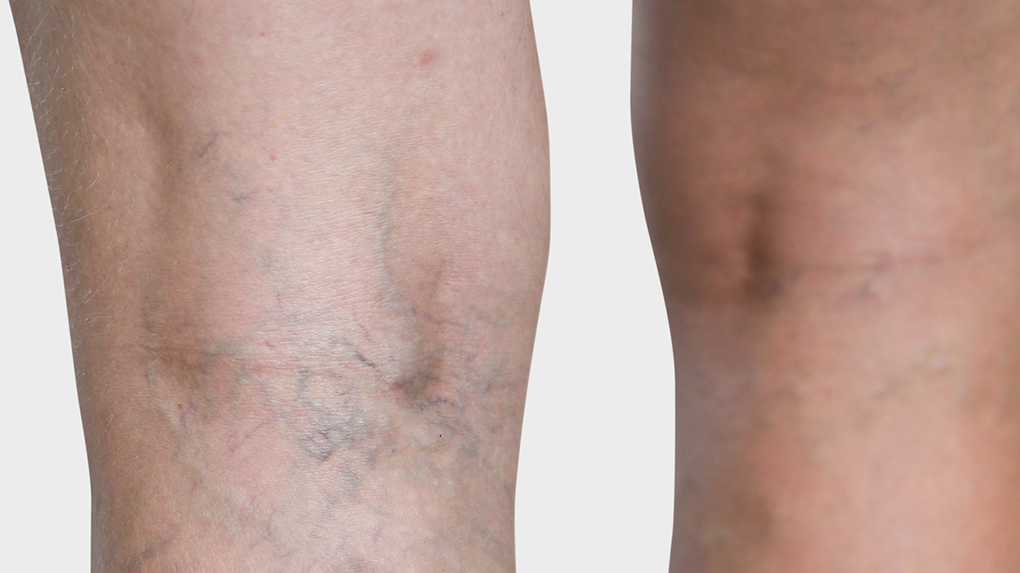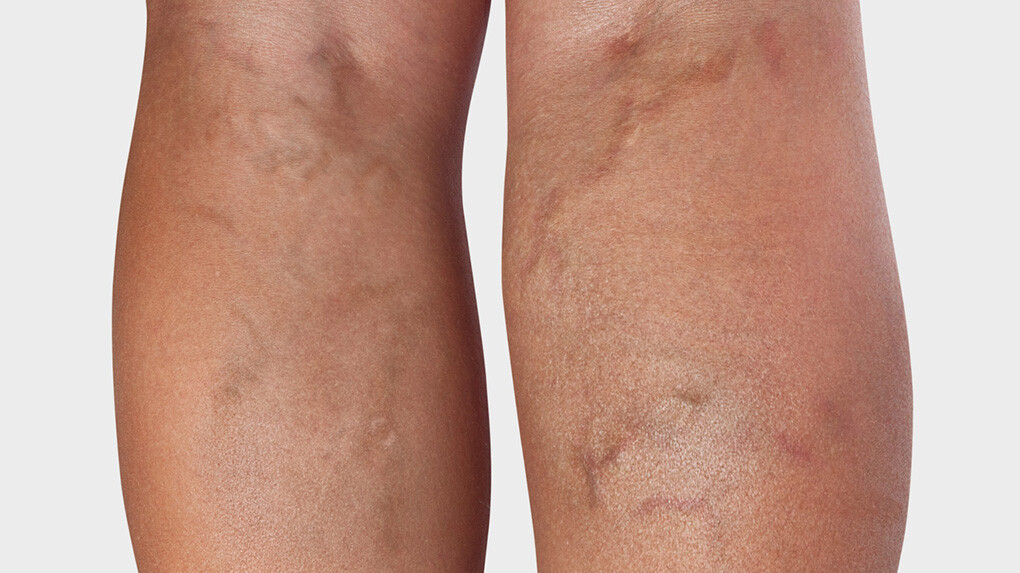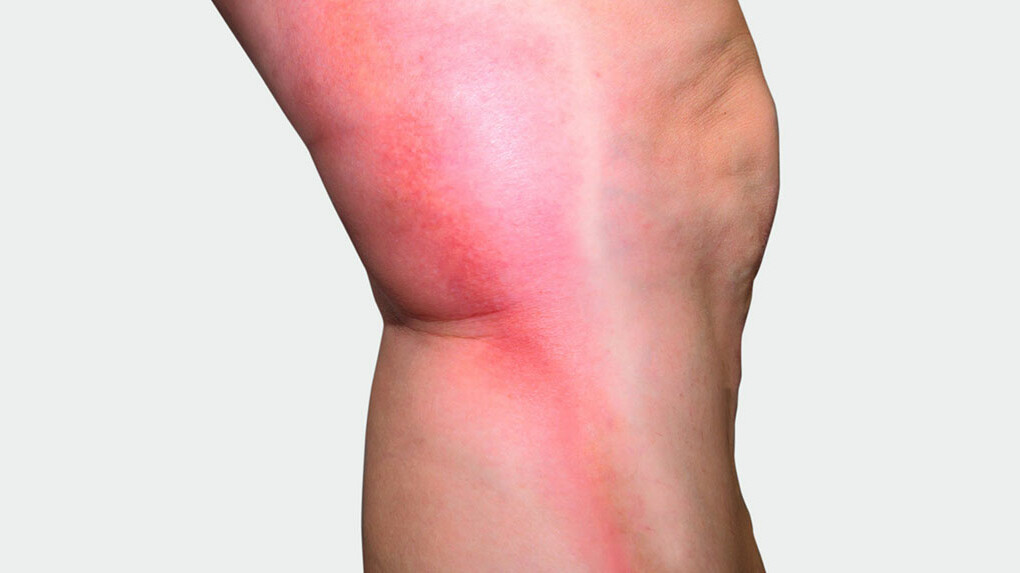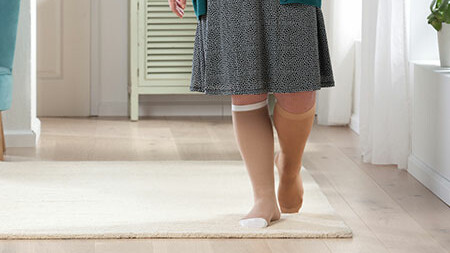

Chronic venous insufficiency
What you should know about chronic venous insufficiency (CVI)
According to the Bonn Vein Study*, roughly 3% of the German population suffers from chronic venous insufficiency (CVI). This condition, also frequently referred to as venous insufficiency, is not life-threatening but should not be downplayed. It poses a risk of serious long-term complications such as venous leg ulcers (ulcus cruris venosum), which means that affected legs absolutely require consistent treatment at an early stage.
Definition of chronic venous insufficiency (CVI)
Chronic venous insufficiency (CVI), also referred to as chronic venous congestion syndrome, is a disorder of the venous system. This condition impairs the return of blood to the heart. This can result in pathological changes to the blood vessels, the connective tissue and skin surface all the way to chronic wounds.
Causes for CVI
The principal cause for CVI is defective venous valves. The risk of suffering from chronic venous insufficiency is higher for women than for men and increases with age, excess weight and prior history of venous disorders.
Risk factors for chronic venous insufficiency (CVI)
The following risk factors increase the probability of developing chronic venous insufficiency (CVI):
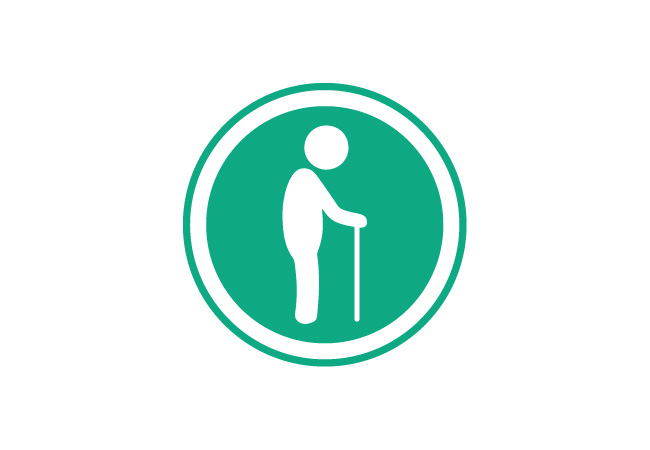
Advanced age

Obesity

Movement restrictions or insufficient exercise
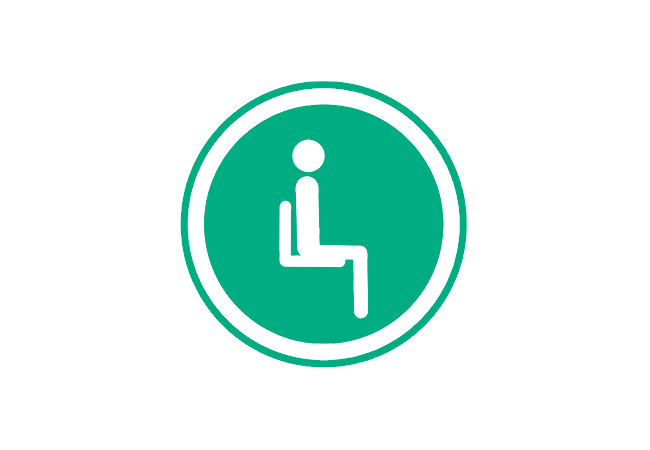
Longer periods of sitting or standing

Hormonal influences (pregnancy, pill)
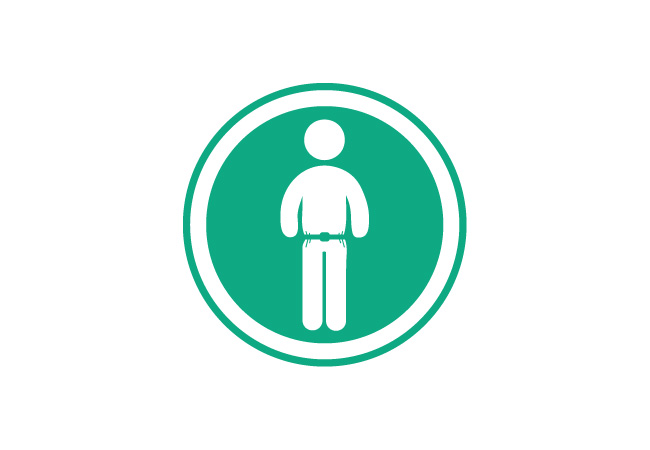
Constricting clothing
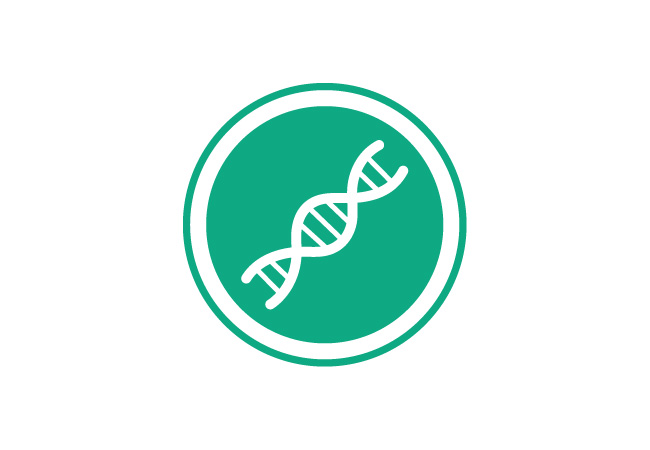
Positive family history
Conditions that make CVI more likely to occur
The following conditions can make chronic venous insufficiency (CVI) more likely to occur:
- Defective venous valves
- Venous inflammation
- Post-thrombotic syndrome (PTS) as a consequence of vein thrombosis
- Genetically inherited blood clotting disorders
- Infections
- Pelvic tumours
- Superficial thrombophlebitis
- Acute leg trauma
- Arterio-venous fistulas
- Vascular malformations such as congenital venous valve damage (venous angiodysplasia)
- Hyperhomocysteinemia
What symptoms are typical for CVI?
Patients suffering from chronic venous insufficiency (CVI) have an increasing feeling of heaviness in their legs, experience swollen ankles at night and may also have spider veins above the ankle and at the edges of their feet. Along with increased calf cramps, abnormal sensations occur in many cases such as feelings of tightness, tingling or itching.
- Frequently heavy legs
- Feeling of tightness in the legs
- Occurrence of varicose veins and spider veins
- Accumulation of fluid in the legs
- Tingling, burning, itching
- Calf cramps
- Skin alterations such as pigmentation, weeping scaly red eczema (stasis dermatitis) and atrophie blanche
- Disrupted, slower wound healing
If you experience one or more of the symptoms listed above, it is advisable to visit a phlebology clinic as soon as possible.
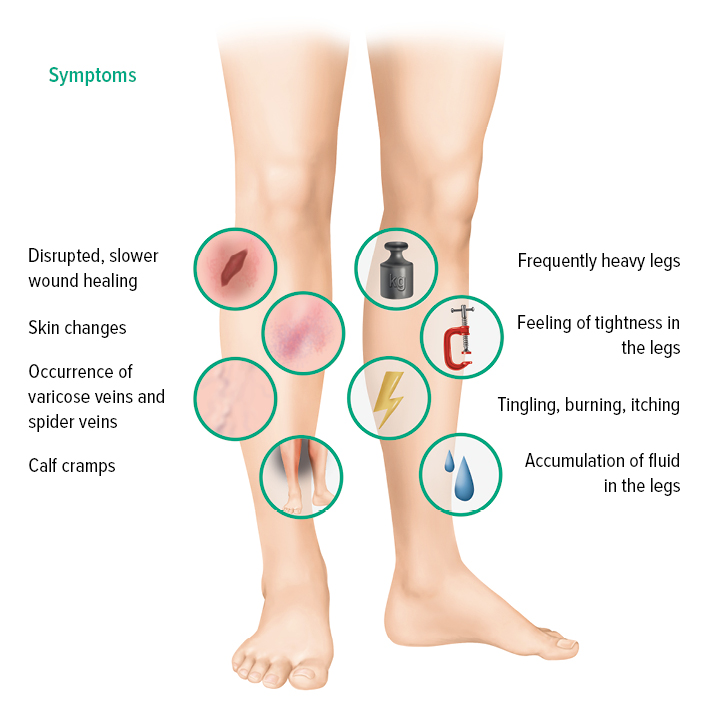
Diagnosis of chronic venous insufficiency (CVI)
Based on the typical symptoms, such as the skin changes described above, chronic venous insufficiency can usually be detected easily with the naked eye. If more extensive diagnostics are required, this is generally carried out using duplex ultrasound. This special ultrasound device shows the compression ratio in the blood vessels and produces images of changes in the vascular walls.
Phlebography involves injecting a contrast agent into the bloodstream to visualize the contours of the blood vessels in the X-ray image. In pressure phlebography, the superficial veins are tied off to obtain a clearer picture of blood flow through the deep leg veins.
Different stages of severity for CVI
In the past, chronic venous insufficiency was classified into 3 severity classes according to Widmer. Nowadays, CVI is generally categorised using the CEAP classification.
| CEAP classification | Categorisation according to Widmer | ||
|---|---|---|---|
| C0 | No visible symptoms | / | |
| C1 | Spider veins | Stage 1 | Spider veins and reversible swelling |
| C2 | Varicose veins (varicosis) | / | |
| C3 | Varicose veins and swelling (oedema) | / | |
| C4 | Varicose veins and skin changes | Stage 2 | Persistent swelling, discolouration and other skin changes |
| C5 | Varicose veins and healed venous leg ulcers (ulcus) | Stage 3a | Healed venous leg ulcers (ulcus scar) |
| C6 | Varicose veins and venous leg ulcers (ulcus) | Stage 3b | Venous leg ulcers (ulcus) |
In the past, chronic venous insufficiency was classified into 3 severity classes according to Widmer. Nowadays, CVI is generally categorised using the CEAP classification.
| CEAP classification | |
|---|---|
| C0 | No visible symptoms |
| C1 | Spider veins |
| C2 | Varicose veins (varicosis) |
| C3 | Varicose veins and swelling (oedema) |
| C4 | Varicose veins and skin changes |
| C5 | Varicose veins and healed venous leg ulcers (ulcus) |
| C6 | Varicose veins and venous leg ulcers (ulcus) |
| Categorisation according to Widmer | |
|---|---|
| Stage 1 | Spider veins and reversible swelling |
| Stage 2 | Persistent swelling, discolouration and other skin changes |
| Stage 3a | Healed venous leg ulcers (ulcus scar) |
| Stage 3b | Venous leg ulcers (ulcus) |
Tips to prevent venous insufficiency
Although many factors involved in chronic venous insufficiency (CVI) are hereditary, there are some preventive steps you can take. The most important activities to prevent chronic venous insufficiency are movement and wearing compression garments. But individual lifestyle also plays a role.
- Preventative wearing of compression stockings
- Lots of movement as part of everyday activities
- Regular endurance sport (swimming, walking etc.)
- Vein exercises
- Avoiding long periods of sitting and standing
- Avoiding severe heat, such as in a sauna or hot baths
- Cold showers and treading water
- No constricting clothing
- Give up alcohol and nicotine
- Healthy diet and losing excess weight
To prevent changes and injuries to the skin, attentive skin care is also required for cases of venous insufficiency. Use PH-neutral cleaning products and lipid replenishing skincare products with 5 to 10% urea.
Conservative therapy for chronic venous insufficiency (CVI)
The goal of treatment for CVI is to improve the circulation and prevent blood congestion. Wearing compression stockings is the most important element of conservative therapy. Compression stockings gently press the veins in so that the venous valves are closer together and better able to shut. The flow speed and thereby the return flow of venous blood is promoted.
Medication-based treatment of CVI is dependent on the concomitant circumstances of the condition. If there is a risk that a blood clot could form (thrombosis), medicines that slow blood clotting (anticoagulants) are used. For severe swelling caused by excess fluids, drugs that get rid of excess water (diuretics) are used to promote urine elimination.
If a wound has already formed that no longer heals itself, you should absolutely seek medical assistance and request information about treatment for venous leg ulcers (ulcus cruris venosum).

Juzo Inspiration
Lifestyle combined with an elegant design.

Juzo Soft
Super soft for feel good moments.

Juzo Adventure
The all-rounder for active men.
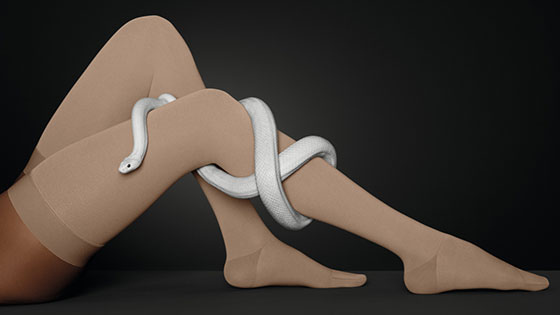
Juzo Move
Patented knit for easy donning and doffing.

Juzo Dynamic
Reliably durable.
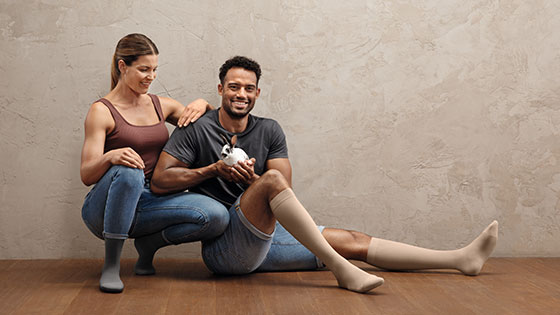
Juzo Intenso
The strong stocking with a soft side

Juzo Inspiration
Lifestyle combined with an elegant design.

Juzo Soft
Super soft for feel good moments.

Juzo Adventure
The all-rounder for active men.

Juzo Move
Patented knit for easy donning and doffing.

Juzo Dynamic
Reliably durable.

Juzo Intenso
The strong stocking with a soft side
Surgical therapy for chronic venous insufficiency (CVI)
Depending on the cause of CVI, surgery may be required. For example, in patients with pronounced varicose veins, surgical sclerosis or complete removal (stripping) of the severely bulging blood vessels during a vein operation may be helpful. Afterwards, intact parts of the venous system resume their function and the blood flow improves. However, long-term treatment with compression generally remains necessary and beneficial even after vein surgery.
Healing process for chronic venous insufficiency (CVI)
Complete healing of CVI is not possible, as damaged veins are unable to fully regenerate. In advanced stages, apart from spider veins and varicose veins, discolouration of the skin also remains visible.
Chronic wounds such as venous leg ulcers can heal. Because this type of wound forms from the interior towards the exterior, there is a major risk that a wound will occur again. This is because the formation of a thin, closed layer of skin is just the first step of the healing process.
For this reason, compression stockings should be worn consistently and on the long term in cases of chronic venous insufficiency.

